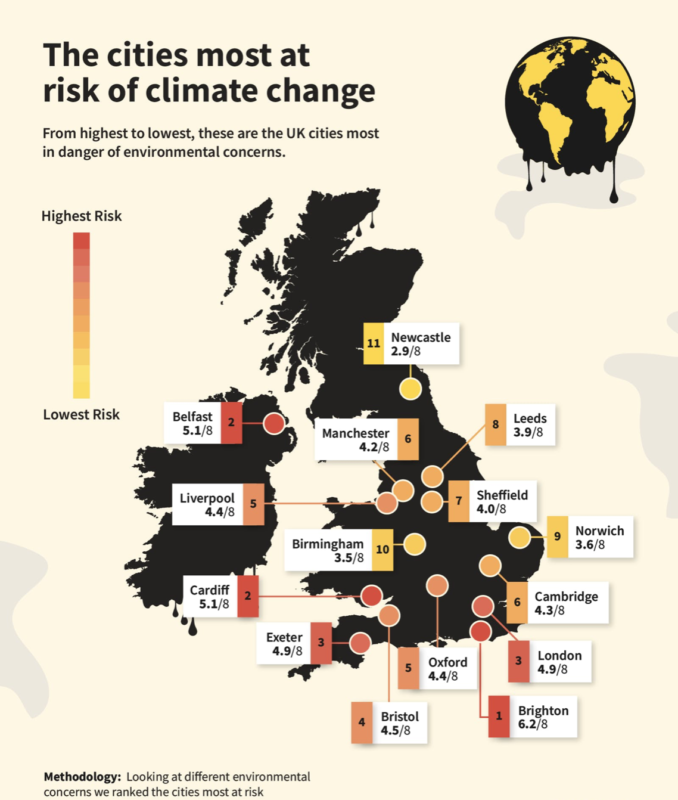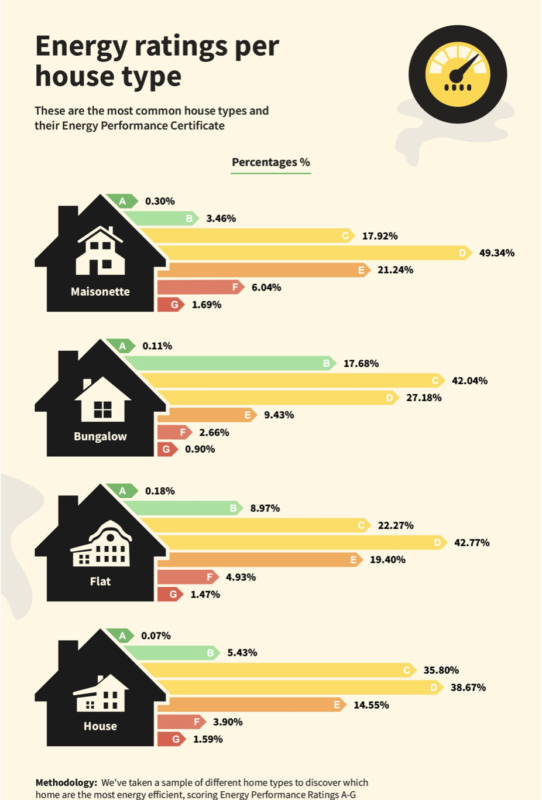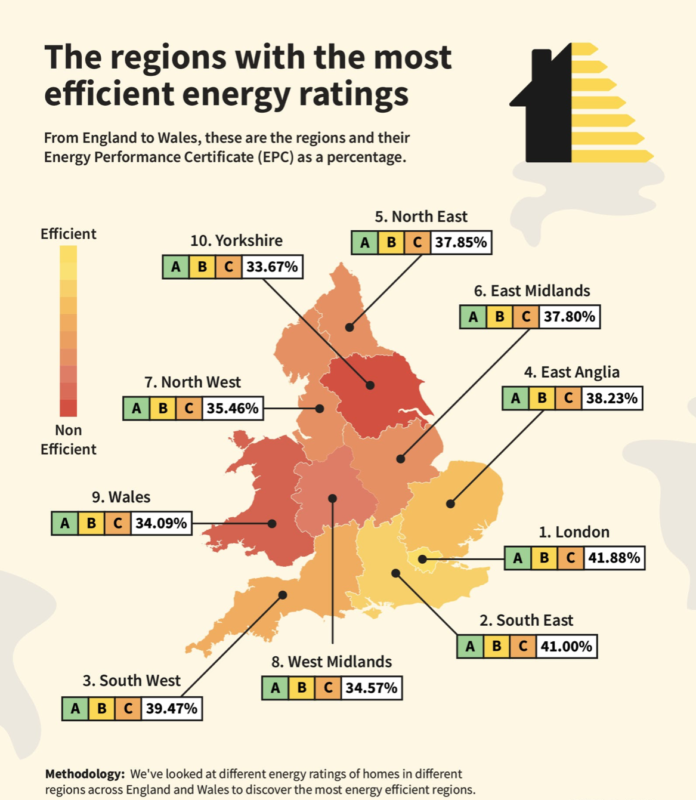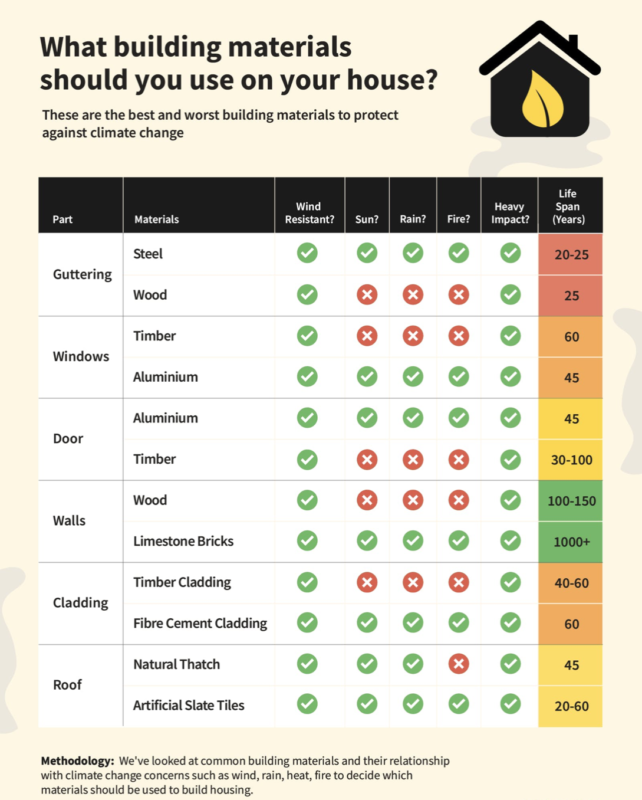Material Possessions: Future-Proofing Homes
Investing financially in your very own home will likely be the biggest purchase of your lifetime.
Home Emergency Insurance for £130
- ✓ Covered up to £1,000 per emergency
- ✓ £250 for overnight accomodation
- ✓ Call out, labour & parts included
You may well spend decades living there with your family if it ticks the boxes of your specific needs, but what could the ongoing effects of climate change mean for your home purchase or sale in the years to come?
New property owners are generally made well aware of the potential issues that can occur with the acquisition of a home, and the financial costs associated with repairs, broken down boilers and general upkeep are expected. That being said, exactly how many buyers are taking the time to consider the environmental impacts of owning a property in a high-risk area?
Over 4 in 5 (85%) Brits say they are concerned about climate change, with more than half (52%) admitting to being ‘very concerned’. Taking this into account, the way we build our houses is also becoming a major issue as we face uncertainty regarding the environment’s future.
Here at Mashroom, our researchers have looked into what climate change issues we can expect over the next century, the areas where housing is most at risk, and how searching for a home built from the right materials can help reduce the risk of damage caused by our ever-changing climate.
The homes in these areas are most at risk of climate change
From blisteringly hot summers to cold winters, climate change is already impacting multiple aspects of our daily lives. Properties across the UK will bear the brunt of climate change with the impacts differing city to city.
From large areas of the coastline sitting underwater by the year 2100 to soil heave and temperature increase, the property experts at Mashroom have analysed the following eight factors to determine which areas of England and Wales are most at risk.
1. Overheating and humidity
2. Storm damage
3. Expected temperature rise
4. Rainy days
5. Rainfall amount
6. Soil heave
7. Slope factors
8. Part of the city underwater by 2100
Cities can score a maximum of 1 point for each of the categories, giving a maximum climate risk factor of 8.
Mapped: The cities most at risk of climate change

Brighton topped the list as the city most at risk from climate change impact. The coastal city faces concerns such as rainfall and rising sea levels, making it the most vulnerable city in the UK.
Tied for second place are Welsh capital Cardiff and Belfast. Both cities can expect to have parts of the city underwater by the year 2100, as rising sea levels threaten most of the nation’s coastal areas. Other coastal cities, such as Exeter and Liverpool also scored highly on the list.
Some cities, including Manchester and Birmingham, aren’t at risk of submerging underwater by 2100 but are still threatened by the effects of rising temperatures and humidity.
Interestingly, four of the top five most ‘at risk’ cities are located in the south of England. So even though housing may be more expensive down south, there is also a higher risk of climate change damaging your home in the future.
Naveen Jaspal, COO of Mashroom:
Climate change largely effects home insurance and mortgage lending. With the increased likelihood of flooding or high winds, insurance companies have to increase their premiums on properties within a high risk flood areas. In turn, these higher premiums will decrease the likelihood of getting a mortgage on these properties. Properties that are likely to become damaged will cause major uncertainty for mortgage lenders. The knock on effect will be much higher deposits and lower loan-to-value ratios in these areas, this is a problem, as due to climate change, we are seeing these high risk areas expanding.
Looking at these risks, it’s evident that the future of our properties is uncertain, and that measures need to be put in place to protect the future of our homes. We’ve already seen an increase in flood protection across the UK, with thousands of Brits being evacuated from storm Christoph in early 2021.
Charting the energy performance crisis in England and Wales.
Energy Performance Certificates (EPC’s) vary between homes, with the age of a home carrying heavy influence over the building’s energy efficiency. EPC ratings also vary between building types, from bungalows to apartment blocks, size matters.
To legally let out a property, an EPC rating of E or higher is required. The highest rating possible is an A, making it the most energy-efficient. The lowest, G, is the least energy efficient.
So how do the UK property types compare when it comes to energy efficiency?

Bungalows prove to be the most efficient type of housing. Just under two-thirds (59.8%) of bungalows in the UK have an EPC rating between A-C. That’s the highest of any type of housing.
Houses come in second, with two fifths (41.3%) of structures having a good or very good EPC rating (EPC A-C) followed by just over a third (31.42%) of flats.
Maisonettes are the least energy-efficient, with just a fifth (21.68%) having a combined A-C rating. However, Maisonettes also have the highest proportion of middle ratings, EPC D, with 49.34%, followed by flats at 42.77%.
Looking at the lower end of the energy-efficient scale, just 2% of homes score the lowest rating on the EPC chart, which is positive news. Proportionally, Maisonettes are still the least energy-efficient homes, with 1.69% rated G on the EPC scale.
Regional energy efficiency ratings revealed
More forgiving than a pass and fail, EPC ratings help potential homebuyers understand their investment and potential fixes needed. Houses may be cheaper in the North but are they built with the future in mind?
We have assessed the EPC ratings in every region to determine which part of England and Wales has the most energy-efficient properties.
The regions with the most energy-efficient properties revealed:

Whilst some regions are knuckling down to achieve higher energy ratings, others seem to be less motivated to make changes.
London is the most energy-efficient region in England and Wales, with two-fifths (41.8%) of residents scoring A-C on the EPC scale. The South East came in a close second, with 41% of homes scoring a rating of A-C.
The top three most energy efficient areas are all located in the south of England. Properties in the South West take third place. Almost two in every five properties (39.47%) have an EPC rating A-C, making them some of the most energy-efficient housing on offer throughout England and Wales.
On the other end of the scale, Yorkshire proved to be one of the least energy-efficient regions, with just a third (33.67%) scoring an energy rating between A-C. The North East and the North West also place within the five least efficient regions.
Wales came in ninth place, with just over a third of all properties (34.09%) rating between A-C on the EPC scale.
Ian Armstrong, director of sustainable architecture company, Arco2, holds the belief that building regulations need to be much more stringent, currently, they are only the bare minimum that is acceptable for habitation.
He says:
EPC’s are largely dependent upon the thermal performance of the fabric such as the type of insulation and window and door specification. Airtightness and thermal bridging will impact heat loss, the type of space heating and hot water appliances will also impact the energy performance rating. Renewables such as solar thermal collectors and photovoltaic collectors (solar panels) both help to provide higher EPC’s.”
Material Matters
When developing and renovating houses, most think about value added to a property, not how the building will withstand the test of time.
To future proof a house, deviation from the norm is incredibly important. Armstrong says: “The industry needs to focus more on future houses. What will houses look like in 100 years with rising sea levels, increased rainfall and a warming planet? We need to better consider using less water, harvesting rainfall, minimising overheating, minimising energy consumption and creating greener cleaner energy”.
But what materials are going to protect your house from the impending impact of climate change?
We’ve discovered the best and worst building materials to use for an eco-friendly home.

Taking the most common house-building materials into account, we have assessed their essential credentials to find out which is the best choice for withstanding climate change.
Research determined that limestone is the most durable material for building exteriors, so it’s no surprise that age-old buildings made of limestone are still standing today.
Wood appears on the bottom of many house materials due to its flammable properties and wood movement issues. Rain is a silent killer of wood, so houses in humid or wet climates may see that wooden houses often suffer from warping and bacterial issues that lead to rot, and a loss of structural integrity. Using such materials as stone, steel and aluminium are key for securing the future of your home.
Each area of the house must withstand climate change impacts, however, no matter how strong a material is, the placement of the material is paramount. Whilst steel is incredibly strong, gutters typically are not a strong part of the house, with long spindly designs they often need upkeep. This is where upfront cost and maintenance cost comes into play, what may be cheap up front may cause financial stress years later when maintenance is due.
In years to come, architects and housing developers will adhere more to function over form, where long-standing buildings will become more important than appearance.
Methodology and Sources
Taking the UK’s top cities in the UK we found the cities that are most at risk of climate change and which cities have the most energy-efficient buildings.
Cities at risk of climate change
Which cities are most at risk of climate change effects including overheating and humidity, storm damage, expected temperature rise, number of rainy days, rainfall amount, soil heave, slope factors and part of the city underwater by 2100.
Sources include: National Trust | BBC | Climate Central
Most Efficient Building types
Taking the EPC ratings from across building types, we have found the most efficient building types
Sources include: GOV UK
Most Energy Efficient Regions
Compiling city and town EPC rating breakdowns we have grouped them into their region to find the most efficient regions
Sources include: GOV UK
Energy Efficient Building Materials
Taking common building materials from all key areas of a building we have classified them into the best and worst materials for the purpose. The key factors rated were material lifespan and weather resistance which includes resistance to rain, wind, fire, sun and heavy impact.
Sources include: Findlay Roofing | FIXR | Cardinal Windows | Sieger Systems | Up Close Home Inspection | Archiline Wooden Houses | Stone Specialist | Timber Cladding Solutions | James Hardie | Insurance Choice | Love Renovate
Please note: EPC ratings were only available for England and Wales